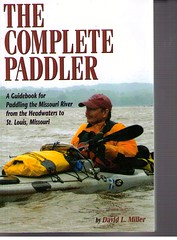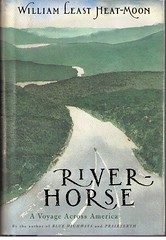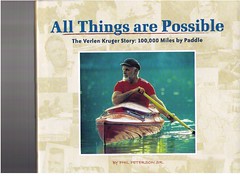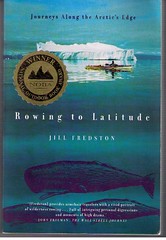This blog is designed to highlight the paddling opportunities within South Dakota, mainly within a 50-mile radius of Sioux Falls. While Sioux Falls is far from the adventure of coastal regions, there is a certain satisfaction in utilizing the available waterways to observe weather, water conditions, and the landscape along the shoreline. In addition, there is a wealth of animal life on the waters of small South Dakota lakes, rivers, and creeks, including geese, ducks, pelicans, great blue heron, egrets, hawks, owls, perching birds, deer, raccoons, and beaver. Eagles, fox, and coyote are also sometimes spotted.
The sites described are places where I have kayaked over the past few years, mostly in South Dakota but sometimes including locations in Iowa and Minnesota. One of the best sources of information on the accessibility of small lakes is the South Dakota Atlas and Gazetteer, the large map book of South Dakota. Lakes with a public access are generally identified by a boat symbol marking the location of a launching site on public land.
You will notice the menu of paddling locations on the right side of the blog. Each of the postings is linked to one of the areas, and my intention is to provide a continuing review of the places where I paddle. Perhaps these narratives will help readers select waterways of interest to them. Please feel free to offer a comment regarding any of my postings; I would welcome the dialog.
I also maintain a companion blog that describes hiking opportunities within the Sioux Falls area. You can access that blog at: http://hikingsiouxfalls.blogspot.com
Monday, December 25, 2006
Saturday, December 16, 2006
Arm Chair Kayaking
Here in most of South Dakota, the paddling season comes to a halt in late October or early November. There are some brave souls who canoe/kayak on the Missouri River near Vermillion nearly all year, but that is pretty cold water and is outside the pale for most paddlers. Here in the Sioux Falls area, the rivers, creeks, and lakes are now frozen. Even though we have so far had an unseasonably warm winter, there is still ice cover on these waterways. It will be late February before the fastest streams begin to flow, and that sort of paddling requires – or should require – a wet suit and a willingness to get wet and be cold. For most of us, we feel lucky when able to get out on the water in March; and for many of us, it tends to be April before we feel comfortable, even along the shore line of nearby lakes. This past spring, I was able to get out on lakes in March, but then it got cold again through much of April.
The South Dakota Canoe Association hosts a winter conference in Sioux Falls each January, and area paddlers gather to hear tales about grand trips members have taken, see a range of boats that members have made, and plan activities for the coming season. This is a good time to sit back, watch the videos that people have made, and think about the fun ahead within a few weeks. It is also time to connect with area paddlers. As details of the conference this year develop, I will post what information I receive.
This is also a time for arm chair paddling, and I want to offer a retrospective on some of the paddling books that I have been reading this year.

Right now, I am reading The Complete Paddler, A Guidebook for Paddling the Missouri River from the Headwaters to St. Louis, Missouri by David L. Miller. Miller is a professor of geography at a university in New Your and has a long fascination with the Missouri River. In this account, he takes us on a detailed journey down the entire 2,321 miles of the river and offers us his observations and advice for such a river journey. Interestingly, he describes paddling the 240 mile Lake Oahe segment as the most difficult paddling he has ever done. His description of the weather, the hazards, the physical aspect of the river, the communities, and the people is compelling. We in South Dakota can readily travel along with Miller as he passes familiar points within this state. Chad Caldwell, of Missouri River Expeditions in Vermillion, makes an appearance in this book as he travels with Miller from Vermillion down to Ponca State Park along the river.

A couple of years ago, I read River Horse, by William Least Heat-Moon. This is an account of a trip across America by water, beginning in New York Harbor, up the Hudson, through a series of rivers, including the Missouri, to the Columbia River at Astoria, Oregon. This is a great book by a gifted writer. He appeared at USD a couple of years ago to offer his observations about the trip, and I was fortunate enough to be in the audience and later to meet him. This book is a look at America from the perspective of a river traveler, and it rather harkens back to a bygone era when that was the dominate transportation mode through the heartland. Least Heat-Moon devotes some good description to his travels through South Dakota along the river, including especially his time in Chamberlain and up to Bismarck.

Verlen Kruger is a near icon among those who seek out expedition travel in canoes or kayaks. Kruger is the person who did over 100,000 miles of expedition canoe travel throughout North and South America. He designed the famous Loon decked canoe and with it made some incredible journeys. Kruger did not begin his paddling career until age 41. I first heard of Verlen Kruger through his articles in Canoe Magazine, and then I heard Dick Davidson speaking of him. Davidson is one of the most amazing people I have ever met in the canoe world. He lives here in Sioux Falls, but he has been on numerous very long canoe expeditions, including trips to the Artic Ocean and along the Yukon River. For most of the past decades, Dick has been the president of the South Dakota Canoe Association. His boat is a Loon decked canoe, designed by Verlen Kruger. This book, All Things are Possible, is not really the most expedition oriented reading; instead, it is an account of Kruger’s life. Canoe expeditions, of course, were a very major part of his life, so this book does feature the many travels he made over about thirty years. It is full of photographs and is an easy read. The book is new, and I ordered it from one of the advertisements within Canoe Magazine.

Finally, I read Rowing to Latitude by Jill Fredston this year. Fredston and her husband live in Alaska and they have traveled the coast lines from Seattle through the northern part of Alaska, along the Beaufort Sea, and along the entire length of the Yukon and Mackenzie Rivers. Her boat of choice is a seagoing rowing shell. Her husband used a sea kayak for much of the travels, but later changed to the rowing shell as well. In addition to her Alaska trips, she has also rowed the east coast of Canada from Newfoundland to the northern part of Labrador, the west coast of Greenland, the coast of Norway and a circumnavigation of Spitsbergen Island (Svalbard). Jill Fredston is a great writer, and her narrative also includes a healthy description of a life style that concentrates more upon experiences than the accumulation of possessions. I bought this book at Barnes and Nobel.
